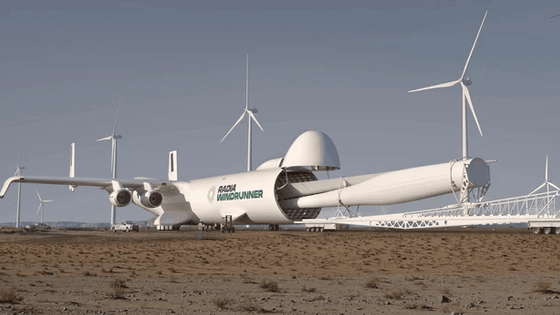Why do wind turbines have three blades?

Wind power uses a device called
Why do wind turbines have three blades? | The Kid Should See This
https://thekidshouldseethis.com/post/why-do-wind-turbines-have-three-blades
Why Do Wind Turbines Have Three Blades? - YouTube
Wind turbine blades do not necessarily have to have three blades. There are turbines out there with two blades, five blades, and even one blade.
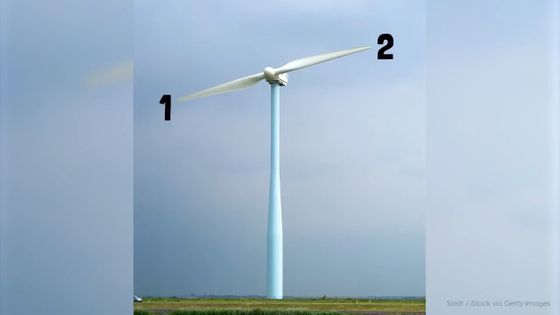
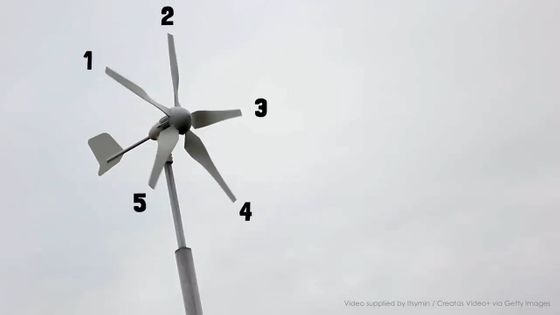
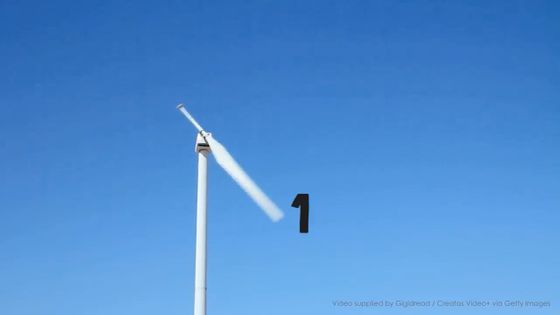
However, most modern turbine blades have three. There are three reasons why turbine blades have three blades.
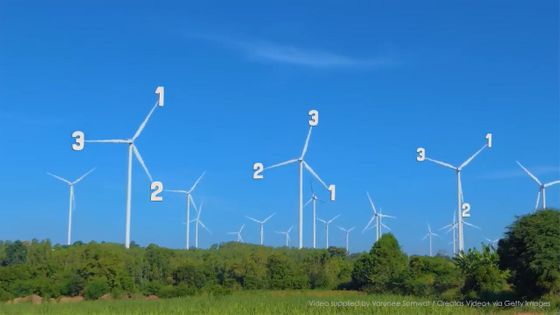
The first reason is 'physical.'
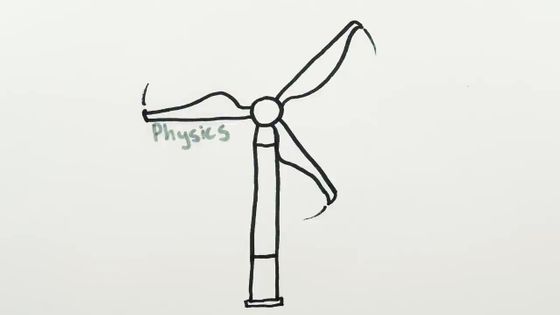
All other things being equal, more blades will generate more
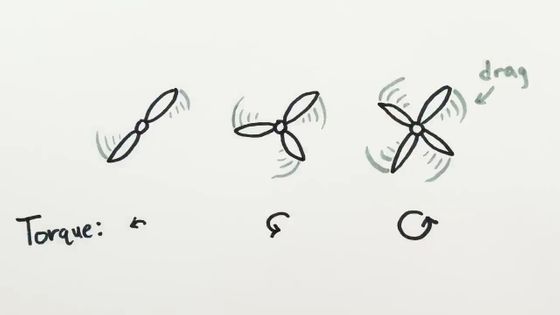
Therefore, turbines with many blades generally operate more efficiently at slower rotation speeds relative to wind speeds, while turbines with fewer blades operate more efficiently at faster rotation speeds.
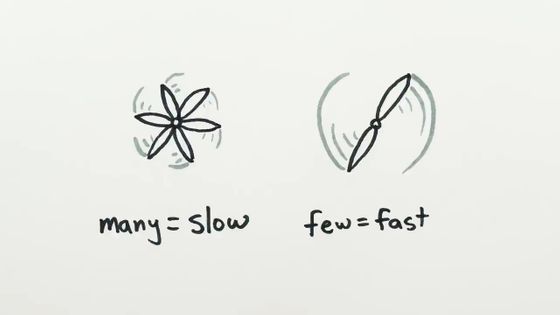
This graph shows the efficiency of turbines with different numbers of blades. The horizontal axis represents the turbine's rotational speed relative to the wind, and the vertical axis represents the turbine's efficiency.
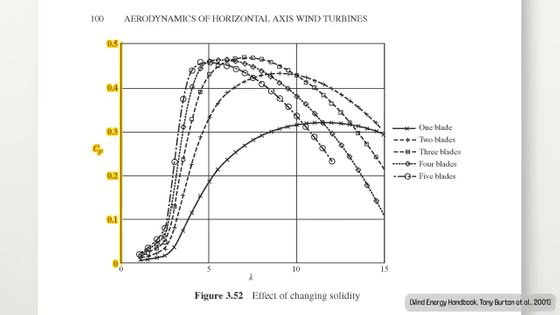
A five-blade turbine is more efficient at slower rotational speeds.
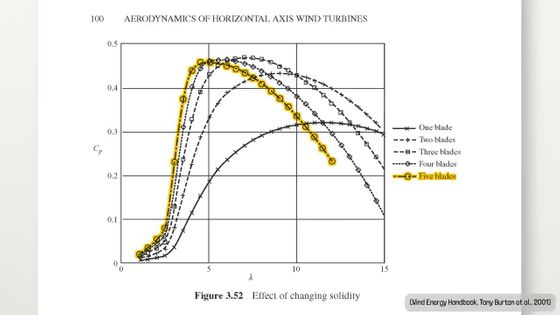
On the other hand, a single-blade turbine is more efficient at higher rotational speeds.
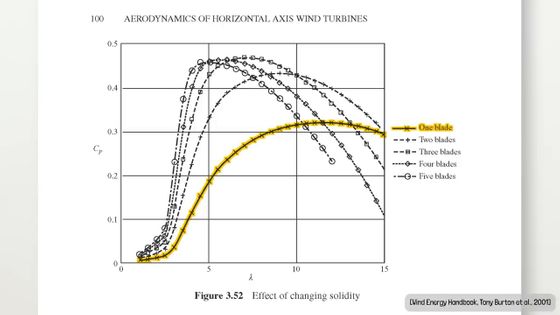
And with three blades, you find that you get the maximum efficiency at intermediate speeds, which is the physics behind why turbines have three blades.
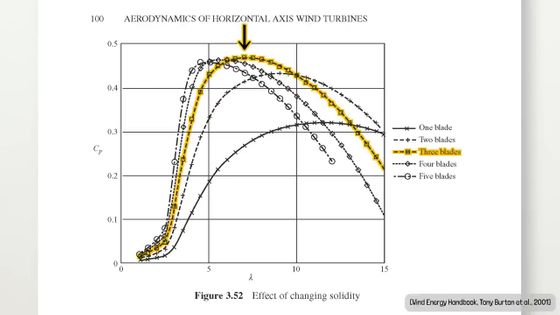
The second reason is 'engineering.'
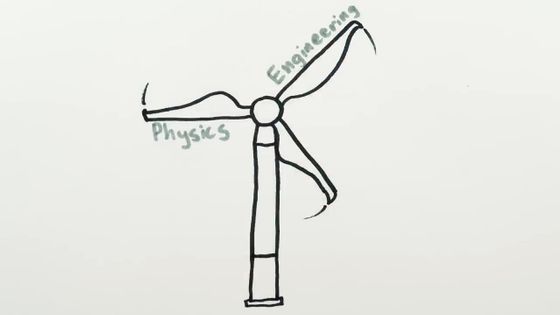
Turbines must be strong enough to withstand the bending, rotation, and vibration forces required for operation.
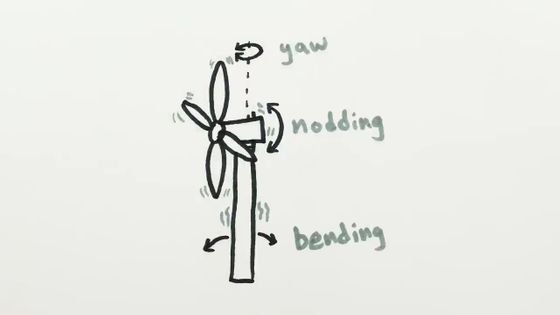
If the pole had two blades, wind conditions could create an unbalanced twisting force, which could cause the pole to bend forward or backward, or twist side to side.
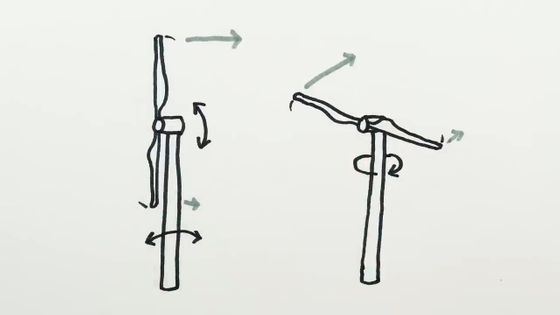
This problem is not limited to two blades, but also applies to any even number of blades.
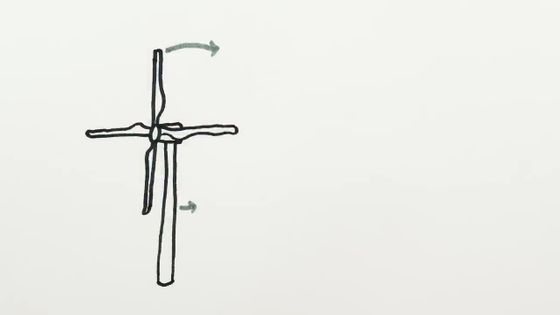
Also, if there is only one blade, there is only a counterweight on the other side of the blade, which again causes the same problem of not being able to deflect the unbalanced wind force.
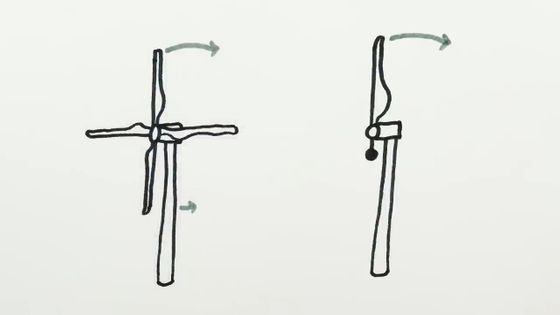
In contrast, with three or five blades, the blades are not paired, so the wind's force is distributed evenly across the entire surface, significantly reducing bending and twisting forces.
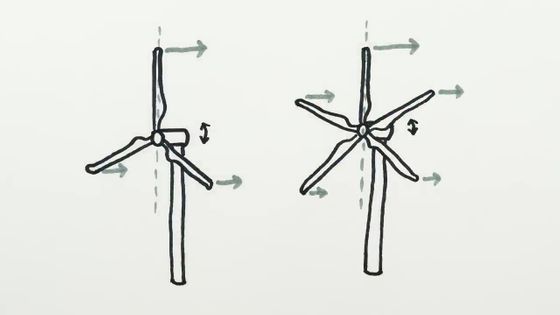
Even with two blades, unbalanced forces can be handled by using stiffer pole, hub, and blade materials and designs, but this comes at an additional cost that offsets the cost advantage of having fewer blades.
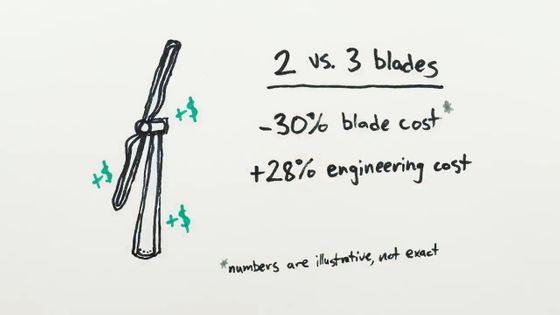
Another benefit of using three or five blades is that they rotate slower, meaning less wear on moving parts over time.
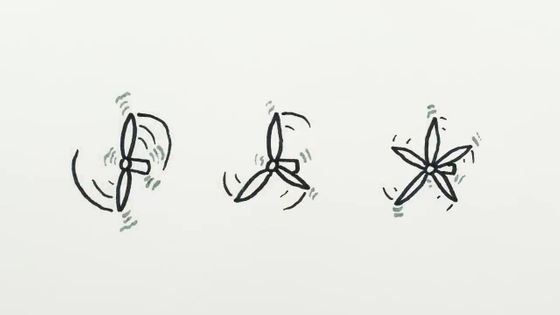
This means that an odd number of blades is better at reducing unwanted wind forces, and more blades mean higher costs, so a three-bladed turbine is the best engineering solution.
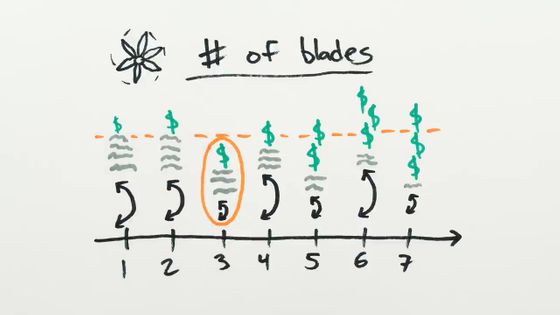
The third reason is 'human comfort.'
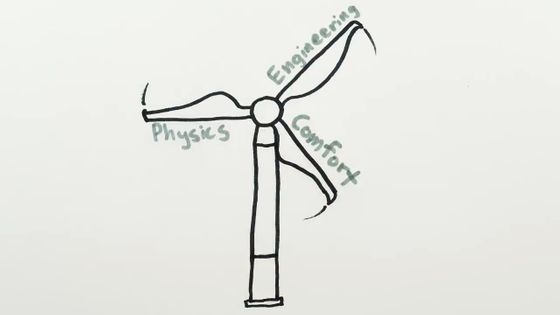
When building a wind farm, it is important to gain the understanding of local residents, so the appearance and sound of the turbines are important factors.
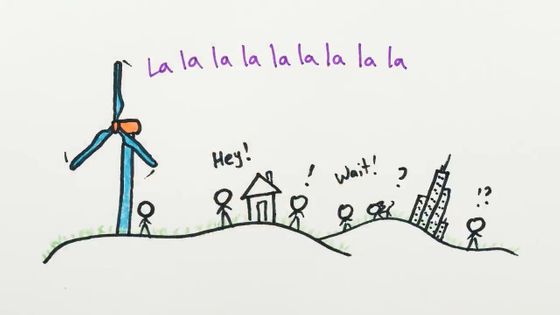
Three-blade turbines are generally considered more aesthetically pleasing than two-blade turbines.
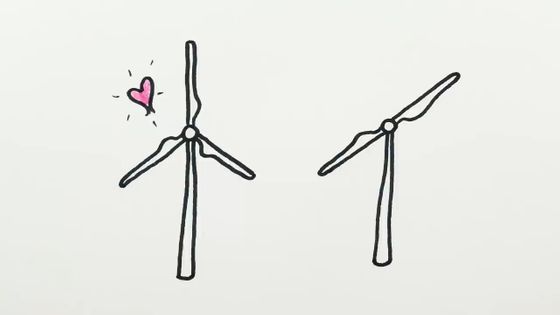
While the three-blade turbine has little change in the spatial proportions it occupies in the horizontal and vertical directions, the two-blade turbine moves back and forth between the horizontal and vertical directions, giving the impression of moving intermittently.
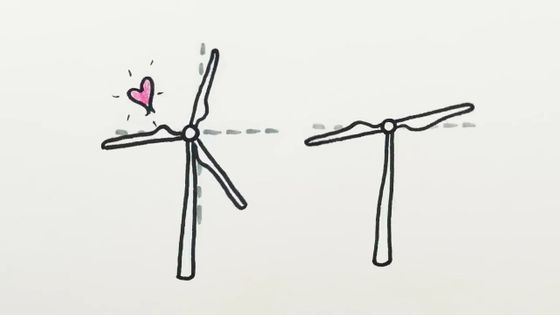
Even when standing still, people tend to prefer the symmetry of a three-blade blade over a two-blade blade.
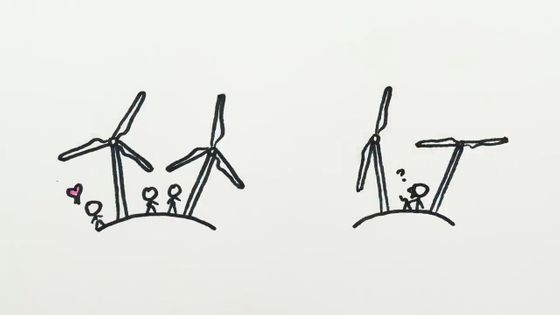
Additionally, the noise a turbine makes is primarily due to the turbulence created by the blades cutting through the air, so the slower the turbine spins, the quieter it will be.
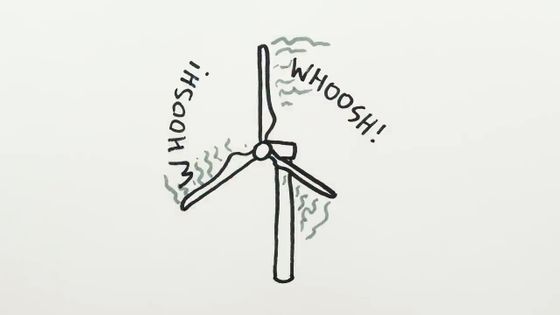
A graph of turbine speed and efficiency shows that a three-blade turbine can achieve equal or greater efficiency than a two-blade turbine at a lower rotational speed.
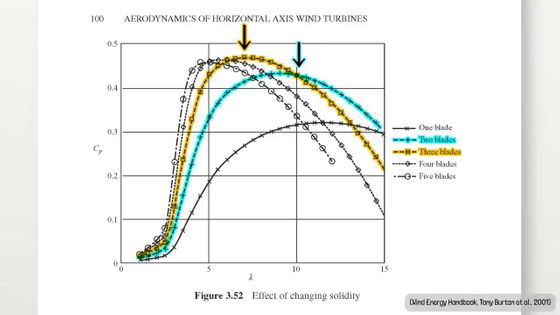
This means that in certain environments, a three-blade turbine will run quieter.
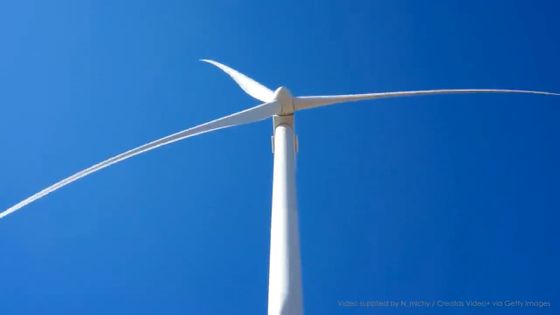
Minutephysics explained that these three reasons have combined to make three-blade wind turbines the norm.
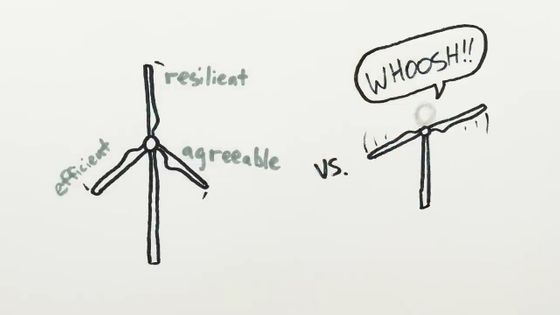
Related Posts:
